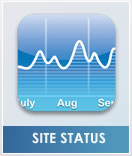|
ALGORITHM:
A set of rules that a search engine uses to rank the listings
contained within its index, in response to a particular query. No
search engine reveals exactly how its own algorithm works, to
protect itself from competitors and those who wish to spam the
search engine. Source: Did-It.com
BACKLINKS:
All the links pointing at a particular web page. Also called inbound
links. Source: Webmaster World Forums
BANNED:
When pages are removed from a search engine's index specifically
because the search engine has deemed them to be spamming or
violating some type of guidelines.
CLICKTHROUGH RATE:
The percentage of those clicking on a link out of the total number
who see the link. For example, imagine 10 people do a web search. In
response, they see links to a variety of web pages. Three of the 10
people all choose one particular link. That link then has a 30
percent clickthrough rate. Also called CTR. Source: Webmaster World
Forums
CLOAKING:
In terms of search engine marketing, this is the act of getting a
search engine to record content for a URL that is different than
what a searcher will ultimately see. It can be done in many
technical ways. Several search engines have explicit rules against
unapproved cloaking. Those violating these guidelines might find
their pages penalized or banned from a search engine's index. As for
approved cloaking, this generally only happens with search engines
offering paid inclusion program. Anyone offering cloaking services
should be able to demonstrate explicit approval from a search engine
about what they intend to do. If not, then they should then have
explained the risks inherent of unapproved cloaking.
CONTEXTUAL LINK INVENTORY
To supplement their business models, certain text-link advertising
networks have expanded their network distribution to include
"contextual inventory". Most vendors of "search engine traffic" have
expanded the definition of Search Engine Marketing to include this
contextual inventory. Contextual or content inventory is generated
when listings are displayed on pages of Web sites (usually not
search engines), where the written content on the page indicates to
the ad-server that the page is a good match to specific keywords and
phrases. Often this matching method is validated by measuring the
number of times a viewer clicks on the displayed ad.
CONVERSION RATE:
The relationship between visitors to a web site and actions consider
to be a "conversion," such as a sale or request to receive more
information. Often expressed as a percentage. If a web site has 50
visitors and 10 of them convert, then the site has a 20 percent
conversion rate. Source: Webmaster World Forums
COST PER CLICK:
System where an advertiser pays an agreed amount for each click
someone makes on a link leading to their web site. Also known as
CPC. Source: Webmaster World Forums
CPC:
see Cost Per Click.
CPM:
System where an advertiser pays an agreed amount for the number of
times their ad is seen by a consumer, regardless of the consumer's
subsequent action. Heavily used in print, broadcasting and direct
marketing, as well as with online banner ad sales. CPM stands for
"cost per thousand," since ad views are often sold in blocks of
1,000. The M in CPM is Latin for thousand. Source: Webmaster World
Forums and Did-It.com
CRAWLER:
Component of search engine that gather listings by automatically
"crawling" the web. A search engine's crawler (also called a spider
or robot), follows links to web pages. It makes copies of the web
pages found and stores these in the search engine's index.
CTR:
see Clickthrough Rate.
DELISTING:
When pages are removed from a search engines index. This may happen
because they have been banned or for other reasons, such as an
accidental glitch on the search engine's part. Source: Adventive
DIRECTORIES:
A type of search engine where listings are gathered through human
efforts, rather than by automated crawling of the web. In
directories, web sites are often reviewed, summarized in about 25
words and placed in a particular category.
DOORWAY PAGE:
A web page created expressly in hopes of ranking well for a term in
a search engine's non-paid listings and which itself does not
deliver much information to those viewing it. Instead, visitors will
often see only some enticement on the doorway page leading them to
other pages (i.e., "Click Here To Enter), or they may be
automatically propelled quickly past the doorway page. With
cloaking, they may never see the doorway page at all. Several search
engines have guidelines against doorway pages, though they are more
commonly allowed in through paid inclusion programs. Also referred
to as bridge pages, gateway pages and jump pages, among other names.
GATEWAY PAGE:
see Doorway Page.
GRAPHICAL SEARCH INVENTORY
. Banners, and other types of advertising units which can be
synchronized to search keywords. Includes pop-ups, browser toolbars
and rich media.
INDEX:
The collection of information a search engine has that searchers can
query against. With crawler-based search engines, the index is
typically copies of all the web pages they have found from crawling
the web. With human-powered directories, the index contains the
summaries of all web sites that have been categorized.
INBOUND LINK:
See Backlinks.
KEYWORDS:
See Search Terms.
LANDING PAGE:
The specific web page that a visitor ultimately reaches after
clicking a search engine listing. Marketers attempt to improve
conversion rates by testing various landing page creative, which
encompasses the entire user experience including navigation, layout
and copy. Source: Did-It.com
LINK POPULARITY:
A raw count of how "popular" a page is based on the number of
backlinks it has. It does not factor in link context or link
quality, which are also important elements in how search engines
make use of links to impact rankings.
LINK TEXT:
The text that is contained within a link. For example, search engine
is a link that contains the link text "search engine."
LISTINGS:
The information that appears on a search engine's results page in
response to a search.
META SEARCH ENGINE:
A search engine that gets listings from two or more other search
engines, rather than through its own efforts.
META TAGS:
Information placed in a web page not intended for users to see but
instead which typically passes information to search engine
crawlers, browser software and some other applications.
META DESCRIPTION TAG:
Allows page authors to say how they would like their pages described
when listed by search engines. Not all search engines use the tag.
META KEYWORDS TAG:
Allows page authors to add text to a page to help with the search
engine ranking process. Not all search engines use the tag.
META ROBOTS TAG:
Allows page authors to keep their web pages from being indexed by
search engines, especially helpful for those who cannot create
robots.txt files. The Robots Exclusion page provides official
details.
ORGANIC LISTINGS:
Listings that search engines do not sell (unlike paid listings).
Instead, sites appear solely because a search engine has deemed it
editorially important for them to be included, regardless of
payment. Paid inclusion content is also often considered "organic"
even though it is paid for. This is because that content usually
appears intermixed with unpaid organic results.
OUTBOUND LINKS:
Links on a particular web page leading to other web pages, whether
they are within the same web site or other web sites.
PAID INCLUSION:
Advertising program where pages are guaranteed to be included in a
search engine's index in exchange for payment, though no guarantee
of ranking well is typically given. For example, Looksmart is a
directory that lists pages and sites, not based on position but
based on relevance. Marketers pay to be included in the directory,
on a CPC basis or per-URL fee basis, with no guarantee of specific
placement. Also see XML Feeds. Source: Did-It.com
PPC:
Stands for pay-per-click and means the same as cost-per-click. See
Cost Per Click.
PAID LISTINGS:
Listings that search engines sell to advertisers, usually through
paid placement or paid inclusion programs. In contrast, organic
listings are not sold.
PAY-FOR-PERFORMANCE:
Term popularized by some search engines as a synonym for
pay-per-click, stressing to advertisers that they are only paying
for ads that "perform" in terms of delivering traffic, as opposed to
CPM-based ads, where ads cost money, even if they don't generate a
click.
PAY-PER-CLICK:
see Cost Per Click.
PAID PLACEMENT:
Advertising program where listings are guaranteed to appear in
response to particular search terms, with higher ranking typically
obtained by paying more than other advertisers. Paid placement
listings can be purchased from a portal or a search network. Search
networks are often set up in an auction environment where keywords
and phrases are associated with a cost-per-click (CPC) fee. Overture
and Google are the largest networks, but MSN and other portals
sometimes sell paid placement listings directly as well. Portal
sponsorships are also a type of paid placement.
POSITION:
See Rank.
QUERY:
See Search Terms.
RANK:
How well a particular web page or web site is listed in a search
engine results. For example, a web page about apples may be listed
in response to a query for "apples." However, "rank" indicates where
exactly it was listed -- be it on the first page of results, the
second page or perhaps the 200th page. Alternatively, it might also
be said to be ranked first among all results, or 12th, or 111th.
Overall, saying a page is "listed" only means that it can be found
within a search engine in response to a query, not that it
necessarily ranks well for that query. Also called position.
RECIPROCAL LINK:
A link exchange between two sites. Source: Webmaster World Forums
REGISTRATION:
See Submission.
RESULTS PAGE:
After a user enters a search query, the page that is displayed, is
call the results page. Sometimes it may be called SERPs, for "search
engine results page." Source: Webmaster World Forums
ROBOT:
see Crawler.
ROBOTS.TXT:
A file used to keep web pages from being indexed by search engines.
The Robots Exclusion page provides official details.
ROI:
Stands for "Return On Investment" and refers to the percentage of
profit or revenue generated from a specific activity. For example,
one might measure the ROI of a paid listing campaign by adding up
the total amount spent on the campaign (say $200) versus the amount
generated from it in revenue (say $1,000). The ROI would then be 500
percent. Source: Did-It.com
SEARCH ENGINE:
Any service generally designed to allow users to search the web or a
specialized database of information. Web search engines generally
have paid listings and organic listings. Organic listings typically
come from crawling the web, though often human-powered directory
listings are also optionally offered. Source: Webmaster World Forums
SEARCH ENGINE MARKETING:
The act of marketing a web site via search engines, whether this be
improving rank in organic listings, purchasing paid listings or a
combination of these and other search engine-related activities.
SEARCH ENGINE OPTIMIZATION:
The act of altering a web site so that it does well in the organic,
crawler-based listings of search engines. In the past, has also been
used as a term for any type of search engine marketing activity,
though now the term search engine marketing itself has taken over
for this. Also called SEO.
SEARCH TERMS:
The words (or word) a searcher enters into a search engine's search
box. Also used to refer to the terms a search engine marketer hopes
a particular page will be found for. Also called keywords, query
terms or query.
SEM:
Acroymn for search engine marketing and may also be used to refer to
a person or company that does search engine marketing (i.e..,
"They're an SEM firm).
SEMPO:
Search Engine Marketing Professional Organization, a non-profit,
formed to increase the awareness of and educate people on the value
of search engine marketing.
SEO:
Acronym for search engine optimization and often also used to refer
to a person or company that does search engine optimization (i.e.,
"They do SEO").
SERPS:
see Results Page.
SHOPPING SEARCH:
Shopping search engines allow shoppers to look for products and
prices in a search environment. Premium placement can be purchased
on some shopping search indices.
SPAM:
Any search engine marketing method that a search engine deems to be
detrimental to its efforts to deliver relevant, quality search
results. Some search engines have written guidelines about what they
consider to be spamming, but ultimately any activity a particular
search engine deems harmful may be considered spam, whether or not
there are published guidelines against it. Example of spam include
the creation of nonsensical doorway pages designed to please search
engine algorithms rather than human visitors or heavy repetition of
search terms on a page (i.e. the search terms are used tens or
hundreds or times in a row). These are only two of many examples.
Determining what is spam is complicated by the fact that different
search engines have different standards. A particular search engine
may even have different standards of what's allowed, depending on
whether content is gathered through organic methods versus paid
inclusion. Also referred to as spamdexing. Source: Webmaster World
Forums
SPIDER:
See Crawler.
SUBMISSION:
The act to submitting a URL for inclusion into a search engine's
index. Unless done through paid inclusion, submission generally does
not guarantee listing. In addition, submission does not help with
rank improvement on crawler-based search engines unless search
engine optimization efforts have been taken. Submission can be done
manually (i.e., you fill out an online form and submit) or
automated, where a software program or online service may process
the forms behind the scenes.
QUERY:
See Search Terms.
XML FEEDS:
A form of paid inclusion where a search engine is "fed" information
about pages via XML, rather than gathering that information through
crawling actual pages. Marketers can pay to have their pages
included in a spider based search index either annually per URL or
on a CPC basis based on an XML document representing each page on
the client site. New media types are being introduced into paid
inclusion, including graphics, video, audio, and rich media. |



















